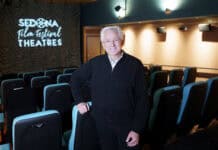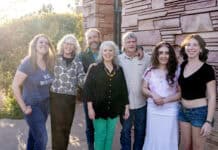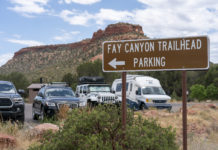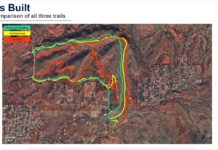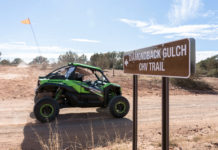Twenty-four years ago, the University of Arizona began a research and training location in the Verde Valley. Through the university’s College of Agriculture and Life Sciences, the program, working with V-Bar-V ranch, provided “opportunities for researchers to study natural resource ecology and management.”
For most of those 24 years, the University was under the impression that the 13.3 acres of land that house V-Bar-V Ranch’s winter headquarters, on Forest Route 618 East of Wet Beaver Creek, were owned by UA. In 2015, the US Forest Service found that, though UA had a lease to use the land and grazing rights, the actual property was still owned by the Coconino National Forest.
“For 20 years, both the Forest Service and the university were under the assumption that when the university purchased the grazing permit in private land associated with the grazing permit in the National Forest Service, both parties assumed that the winter headquarters was under title to the university,” said Mitch McClaran, UA Associate Director for Strategy and Rangelands, Arizona Experiment Station for the College of Agriculture and Life Sciences. “And then in 2015 the Forest Service discovered that that was not true. Meanwhile, we had built buildings and made improvements to infrastructure on those 13 acres, and the Forest Service knew about and did not ask us to follow any of their procedures because the assumption was that it was our land.”
To remedy this situation, both the Forest Service and UA worked together with Arizona’s two Senators — Republican Martha McSally and Democrat Krysten Sinema — who proposed a bipartisan bill in the U.S. Senate swapping that Forest Service Land to the University, in exchange for an equal value of land owned by UA at Mahan Park, a little farther to the east, close to Lake Mary Road.
“The V-Bar-V Ranch is the perfect place for University of Arizona students to get hands-on experience learning about cattle, ranching, and large animal medicine,” Senator McSally wrote in a press release. “This bipartisan bill will allow the UA to house and train the next generation of large-animal veterinarians and expand its community education initiatives.”
Senator Sinema’s office did not respond to a request for comment.
In 1994, 43 acres at Mahan Park was purchased by the University for approximately $525,000, along with grazing permits for a wider section of the Coconino National Forest. According to McClaran, the land had been purchased with the purpose of giving the animal sciences department at UA a chance to have their own research herd of cattle for study. The uses of the university-owned land have widened since the initial purchase. The bill introduced in the Senate directs the US Department of Agriculture to assess the V-Bar-V Ranch land as well as the Mahan Park land and determine a portion of land at Mahan Park that is equivalent in monetary value in order to make the swap.
According to McClaran, though the land being given up by the University has not yet been determined, UA does not see much downside in losing some of the land at Mahan Park, and expects to be able to continue operating mostly as normal once the title on the land has been transferred over, including hoping for grazing rights on the Forest Service land.
“There’s not been any animosity,” McClaran said. “We — the Forest Service and the University — were caught by surprise. They have a set of policies they need to follow, and that’s very understandable. And so this is a legislative solution to correct what everybody thought was the case to begin with. The Forest Service has been supportive, providing technical assistance with drafting the legislation.”
Once the University owns the V-Bar-V Ranch land, they intend to install a new well to allow for their expanded needs. The UA is also seeking accreditation for a veterinary program that will include use of the ranch.
Jon Hecht can be reached at 634-8551 or email jhecht@larsonnewspapers.com


